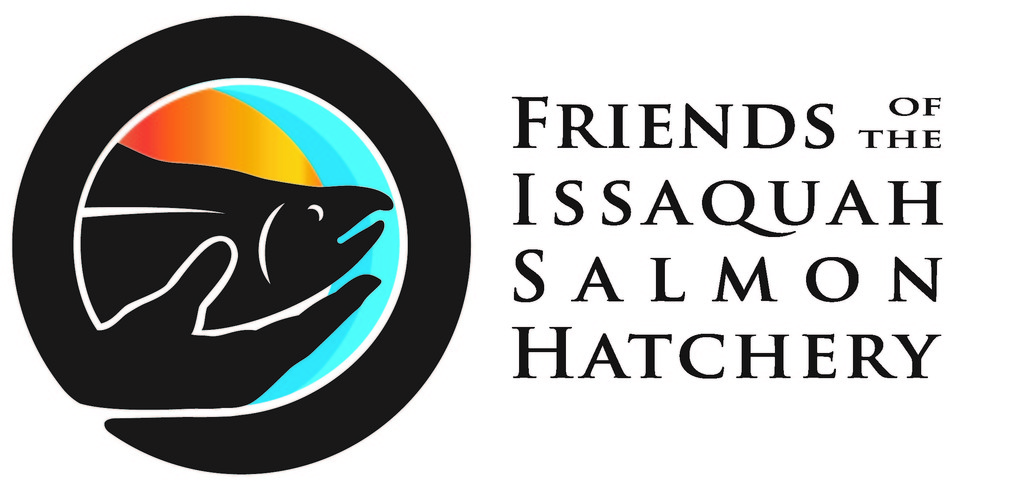Hatchery Work Through the Seasons
The Washington Department of Fish & Wildlife (WDFW) owns and operates the Issaquah Salmon Hatchery and each year their staff raise roughly 3,500,000 Chinook and 1,000,000 coho. They are assisted by volunteers from the Friends of the Issaquah Salmon Hatchery (FISH). Hatchery work is cyclical, much like raising any other kind of crop or livestock. Hatchery workdays are very different depending on the season.

Autumn
Adult salmon arrive at the hatchery in late August for the fall spawning season. Chinook arrive first and spawn through mid-October. Coho arrive late September through November. FISH volunteers join hatchery staff to help harvest eggs on Tuesdays beginning in late September.

WINTER
During the winter, hatchery staff and FISH volunteers care for millions of salmon eggs, sorting out infertile eggs from the incubation trays in the hatchery building. After hatching, the salmon fry are transferred outside to the rearing ponds (raceways), with Chinook occupying the ponds in front of the building, and coho placed in ponds across the creek.

SPRING
In the spring, about half a million yearling coho and 3 million juvenile Chinook are released into Issaquah Creek. Both are released when they are transitioning from the fry to the “smolt” stage, which means they are ready to migrate from fresh water to salt water. They will make their way through lakes and rivers, following the current, out to Puget Sound at the Ballard Locks.

Summer
Rearing ponds house juvenile coho, who spend a whole year at the hatchery before they are ready to migrate. These fish will be released the following spring when they reach the smolt stage. Now empty Chinook ponds host rainbow trout, and trout food is available in the FISHop gift shop on weekends.
